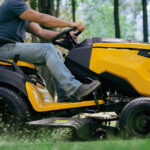Why Casters Matter in the Modern Workplace
In busy production environments, casters are central to daily operations in iron environments, warehouses, hospitals, and countless other spaces. Casters safely move equipment, supplies, or finished goods, resulting in better productivity and fewer workplace injuries. Despite their simple appearance, the design and material of a caster make a dramatic difference in how equipment navigates various surfaces and how much physical effort is required for movement. Facilities that use reliable Hamilton casters and similar high-quality brands have learned that robust caster selection reduces risks, supports seamless workflows, and even extends the life of expensive flooring and sensitive material handling equipment.
A thoughtfully chosen caster doesn’t just solve a single problem. Instead, it protects your people, your assets, and your investment. Research from occupational safety experts highlights that poor caster selection is directly associated with workplace incidents, such as strains, repetitive motion injuries, and accidental property damage. Integrating the right caster solutions is foundational to business success in an era where efficiency and safety are non-negotiable.
Types of Casters and Their Uses
Casters come in a remarkably diverse range of forms, each suited for different types of work. The most common types include rubber, polyurethane, nylon, and steel casters. Soft rubber casters are ideal in environments like hospitals or schools, where noise reduction and floor protection are essential. They glide quietly over tile and linoleum, reducing distractions and wear on sensitive surfaces. Polyurethane casters strike an excellent balance of safety, making them the preferred choice in warehouses, retail settings, and laboratories. They withstand moderate wear and tear and can handle heavier loads without damaging floors.
Nylon and steel casters are unbeatable for heavy-duty work in manufacturing or distribution. These rigid, robust wheels can support extremely heavy equipment, maintain integrity under high heat, and resist chemical exposure. Many workplaces also rely on specialized casters with features such as locking mechanisms for extra stability or shock-absorbing wheels to protect sensitive inventory. In large distribution hubs, it’s common to see carts equipped with multidirectional swivel casters and brakes for maneuvering tight spaces and steep inclines with confidence.
Critical Considerations for Caster Selection
Selecting the right casters requires more than a quick guess; it needs a knowledge-driven approach. Consider these essential aspects before making your choice:
- Load Capacity: Casters must comfortably support the total weight of the equipment plus its maximum anticipated load. Failing to account for weight causes wheels to fail, bearings to lock up, or even complete breakage, exposing employees and equipment to unnecessary risk.
- Flooring Type: Match the caster wheel material to your flooring. Rugged wheels roll easily on tile and concrete but may damage softer surfaces. Conversely, soft wheels may struggle to move across carpet or uneven floors. The right pairing minimizes rolling resistance, extends floor life, and reduces physical strain.
- Operational Environment: Casters used around moisture, chemicals, extreme heat, or cold must be manufactured from the right materials, such as stainless steel or high-grade polyurethane, to ensure longevity and performance.
- Frequency of Use: Equipment moved multiple times a day will require more durable casters, often with sealed bearings to prevent dust and debris from interfering with operation.
Many workplace injuries and operational failures can be traced back to something as simple as the wrong wheel for the job. Careful assessment before installation or during equipment upgrades makes a world of difference.
Innovations and Trends in Caster Technology
Recent innovations in caster technology have delivered easier, quieter, and more ergonomic mobility solutions. Caster manufacturers are engineering polyurethane blends that maximize load capacity while reducing rolling resistance, making it easier for staff to move even the heaviest loads with less physical effort. Casters now have built-in sensors that can track wheel usage, predict maintenance cycles, and even alert teams when it’s time for replacement.
The push toward automation and worker well-being has also influenced advanced caster designs. According to industry reports from material handling news sources, smart casters are increasingly used to optimize product flow in distribution centers, where real-time data on cart location and usage helps streamline logistics. Ergonomically designed wheels reduce injury risk and fatigue, especially in settings with high volumes of repetitive movement.
Benefits of Choosing Appropriate Casters
The benefits of thoughtful caster selection are significant and multifaceted. For employees, better casters mean less strain and fewer injuries, outcomes that improve morale and retention. For facilities, correctly matched casters reduce maintenance costs, help prevent costly floor repairs, and keep production lines moving without unscheduled stops. A real-world example is seen in many distribution and packaging centers, where switching to shock-absorbing casters for delicate goods has sharply reduced product breakage and downtime, protecting revenue and reputation.
Proper caster fit also enhances maneuverability, which translates directly into operational efficiency. Loads can be moved faster and more precisely, while specialized casters—such as those with total-lock brakes or antistatic properties—add a vital extra layer of protection in sensitive areas, from cleanrooms to electronics manufacturing.
Common Mistakes to Avoid
While casters are widely used, several common missteps often lead to costly and dangerous outcomes. Many facilities fail to account for maximum load weights, leading to wheels wearing out or failing prematurely. Others overlook the importance of pairing wheel material with flooring type, accelerating both caster and floor deterioration. Some organizations lack systematic inspection routines, resulting in broken wheels going unnoticed until an accident occurs.
- Improper load rating assessments can lead to unsafe working conditions.
- Failure to match casters to the flooring results in unnecessary repair costs and worker fatigue.
- Neglecting regular inspection means worn or defective casters can cause accidents or sudden equipment failure.
- Insufficient staff training can result in misuse, such as overloading, abrupt movements, or neglecting to lock wheels for stability.
Fostering an environment of routine checks and continuous training helps keep everyone aware and reduces liability.
Steps for Assessing and Upgrading Your Casters
- Conduct an inventory of equipment relying on casters. Examine all wheels for wear, cracks, debris buildup, or difficulty in swiveling. Prioritize repair or replacement for anything underperforming.
- Open lines of communication with team members who operate and move equipment daily. Their practical feedback can identify pain points that a surface inspection might miss.
- Collaborate with facilities managers and safety leads to document recurring issues related to caster use, such as damaged floors, excessive push/pull force, or equipment downtime.
- Research the latest caster advancements relevant to your industry and consider ergonomic and innovative options where appropriate. Evaluate suppliers based on their ability to meet your specific operational demands.
- Implement caster upgrades in batches, monitor performance, and set reminders for ongoing maintenance checks. Adjust routines as needed to maximize the impact of your investment.
Encouraging a Safety-First Approach in Caster Use
Workplace safety and efficiency increasingly hinge on smart, forward-thinking decisions down to the smallest components. Casters may not grab headlines, but their role in protecting workers and keeping operations smooth is immense. Organizations that view caster selection, regular maintenance, and employee training as investments rather than expenses consistently enjoy safer, more productive, and cost-effective operations. With the right strategy, your workplace can keep progress rolling, one caster at a time.






